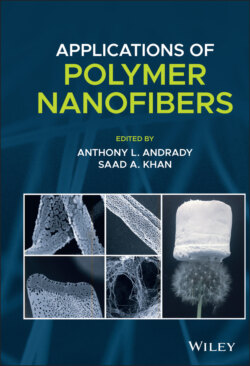Читать книгу Applications of Polymer Nanofibers - Группа авторов - Страница 51
2.5.5 Biomedical Textiles
ОглавлениеBy using biomaterials, nanofiber nonwoven fabrics can be made to be suitable for biomedical applications, including tissue scaffolds, drug release control, catalysts, and enzyme carriers (Feng 2017). Zhang et al. produced PLA/ poly(N‐isopropylacrylamide) (PNIPAM) core–shell nanofiber nonwovens to control thermosensitive drug distribution (Zhang et al. 2015). PLA loaded with additives and drugs was electrospun as the core fiber, and the PNIPAM fiber shell was undertaken by UV initiation. The morphology showed nanosized pores on the surface of the fibers, which could improve the loading of the drug. The prepared nanofiber fabric was thermosensitive and had potential in the biomedical fields involving drug delivery and tissue engineering.
Besides, the nanofiber woven fabrics are also a good candidate for biomedical applications, owing to higher mechanical properties, dimensional stability. Shao et al. fabricated a multilayer nanofiber woven fabric for use as medical scaffolds, which made from PLA/TSF nanofibers (Shao et al. 2016). In that work, mechanical property, wettability, protein adsorptivity, hemocompatibility, and other medical properties were investigated. The fabric obtained a tensile strength of 180.36 MPa, Young's modulus of 417.65 MPa and great strain of 20.4%, which were higher than those of the nonwoven structure with the same material. Besides, this multilayer nanofiber woven fabric was hydrophilic with a water contact angle of 71.3° and excellent hemocompatibility.
